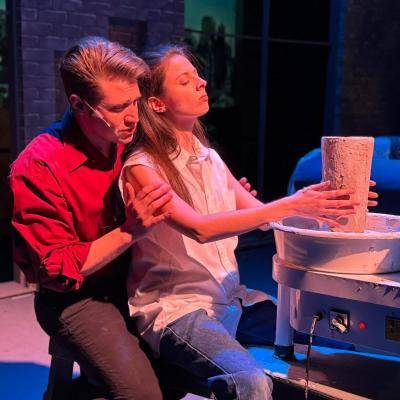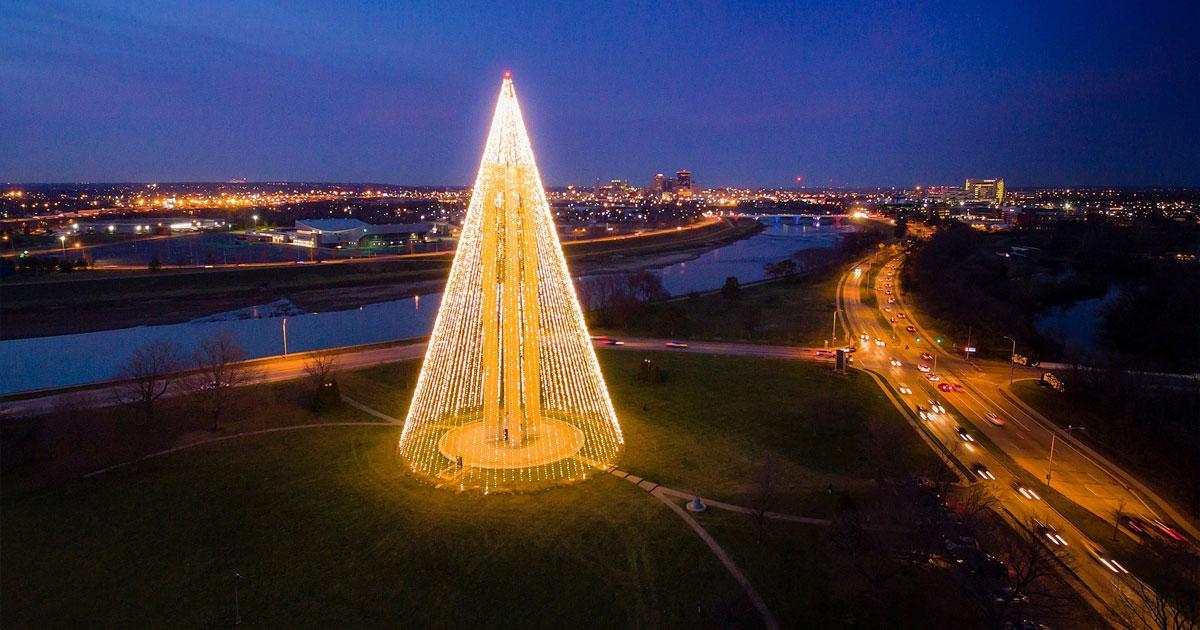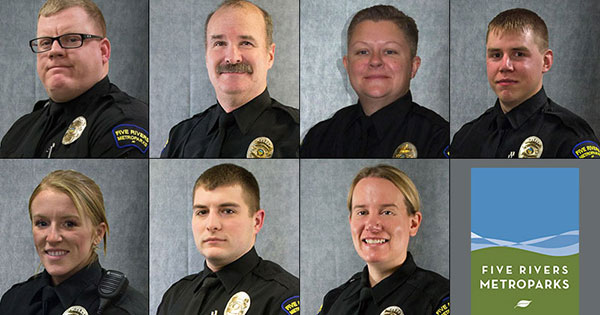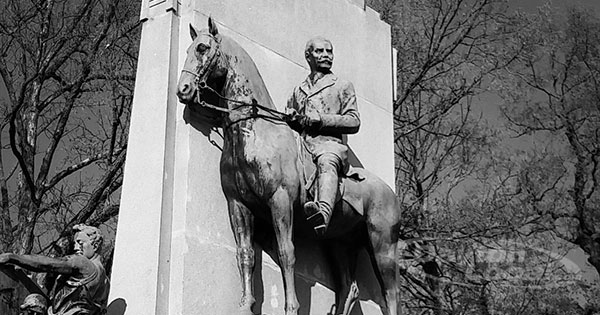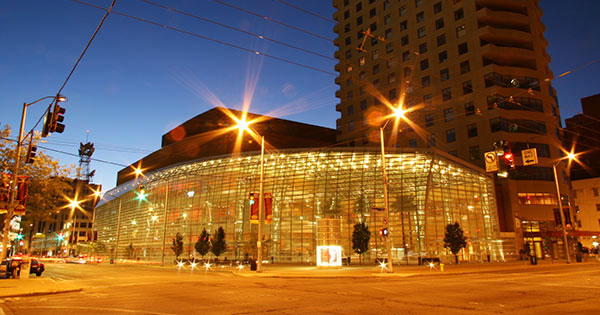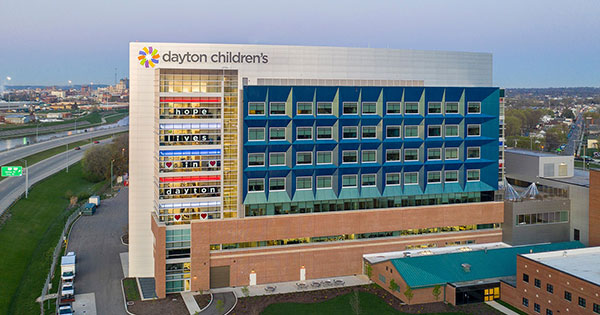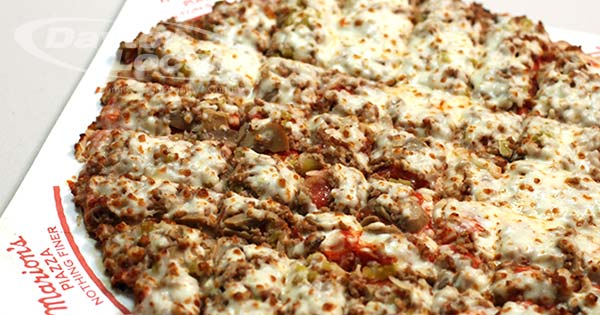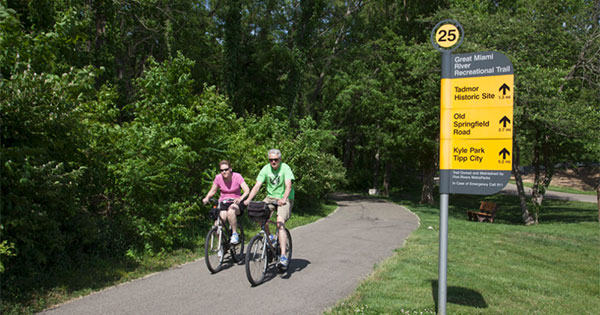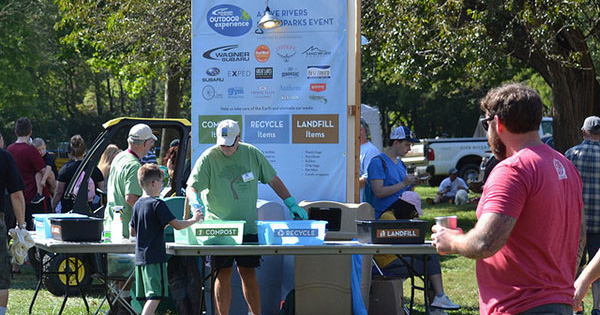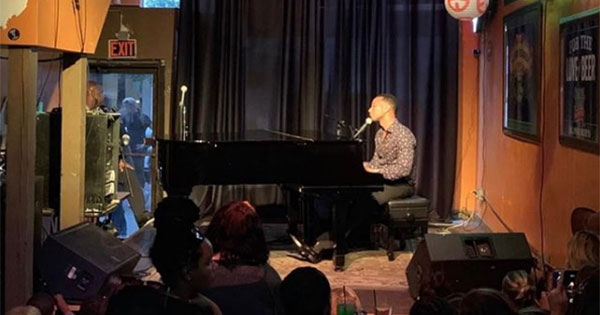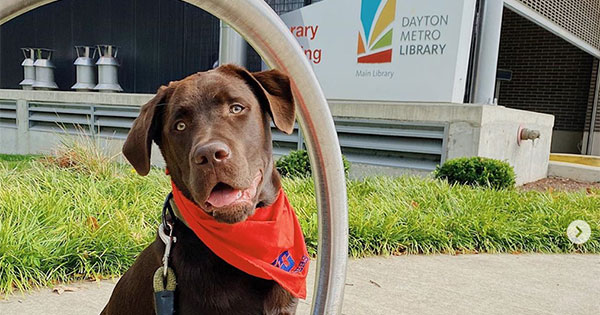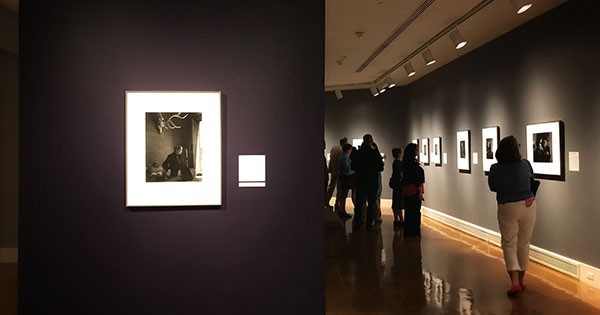
The Dayton Art Institute's latest exhibition spotlights some of the most famous black and white photographic portraits of the last century.
American Portraits Makes Its Mark
You may not be familiar with photographer Yousuf Karsh by name, but you are sure to recognize his iconic black and white images. The artist first gained notoriety for his portrait of a scowling British Prime Minister Winston Churchill staring into the camera as a “roaring lion”. The resulting image catapulted Karsh to success and for the next sixty years, he photographed the most important politicians, entertainers, business leaders, scientists, artists, and sports legends of the 20th century.
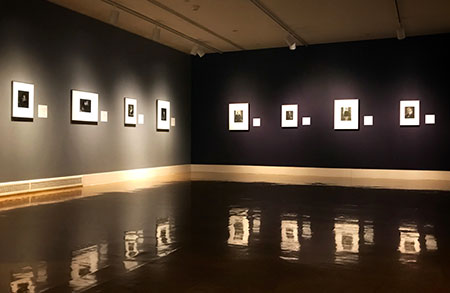 What makes a Karsh gelatin silver print unique is its expert use of artificial lighting to create dramatic effect, a technique the artist learned while working in the theatre. Now, thanks to this traveling exhibition of 45 works organized by the Smithsonian’s National Portrait Gallery and brilliantly curated and presented by the Dayton Art Institute staff, you can experience this artist’s genius firsthand.
What makes a Karsh gelatin silver print unique is its expert use of artificial lighting to create dramatic effect, a technique the artist learned while working in the theatre. Now, thanks to this traveling exhibition of 45 works organized by the Smithsonian’s National Portrait Gallery and brilliantly curated and presented by the Dayton Art Institute staff, you can experience this artist’s genius firsthand.
Viewing Yousuf Karsh: American Portraits is like opening a time capsule to years past. Within the exhibit are a treasure trove of historical asides and anecdotes that create an informative and enjoyable visitor experience. Some of Karsh’s subjects would be perfectly at home in an episode of the TV show Mad Men, a throwback to the days in which powerful male figures wore three-piece suits and skinny ties and posed with their scotch and half-smoked cigarettes in a library of leather-bound encyclopedias. The portraits of broadcaster Edward R. Murrow, IBM chief Thomas J. Watson, and architect Frank Lloyd Wright certainly fit this bill. So do those of Humphrey Bogart and Clark Gable, who ooze swagger and raw masculinity in their monochrome likenesses.
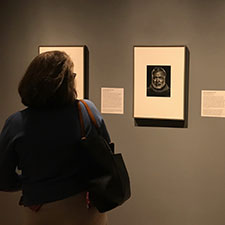 Thankfully, the selected portraits in this exhibit balance the depiction of patriarchal authority figures with renderings of equally powerful and influential iconoclastic women, from the quiet strength of painter Georgia O’Keefe to the vibrant energy of dancer Martha Graham to the savvy entrepreneurial spirit of beauty empress Eve Arden. Karsh elevates actress-turned-royal Grace Kelly as the epitome of style and sophistication and First Lady Jackie Kennedy as a stateswoman of unflappable grace.
Thankfully, the selected portraits in this exhibit balance the depiction of patriarchal authority figures with renderings of equally powerful and influential iconoclastic women, from the quiet strength of painter Georgia O’Keefe to the vibrant energy of dancer Martha Graham to the savvy entrepreneurial spirit of beauty empress Eve Arden. Karsh elevates actress-turned-royal Grace Kelly as the epitome of style and sophistication and First Lady Jackie Kennedy as a stateswoman of unflappable grace.
I appreciate that, for the most part, Karsh does not romanticize his subjects for art’s sake. Warren Buffett is rendered as we see him today: slightly disheveled with mussed hair and a crooked tie. First Lady Eleanor Roosevelt is captured as a charming but empowered eccentric with a toothy grin and busy hands. Writer Ernest Hemingway is photographed up close to accentuate his face, a rugged exterior etched with the crags and lines of a weathered adventurer and fitting of the man Karsh described as “cruelly battered by life but seemingly invincible.”
My personal favorite of the collection is singer Marian Anderson, the first African-American to perform at New York’s Metropolitan Opera in 1955. Karsh captures Anderson gazing toward the heavens in a reflective pose as if she is summoning her muse. As I studied this portrait I was not only awed by the stunning beauty of this accomplished woman, but by the strength, poise, and dignity with which she carried herself through the trials of being a powerful black woman just before the rise of the Civil Rights movement.
Karsh said that “the heart and mind are the true lens of the camera” and I was impressed how this exhibit reaches the emotion and the intellect. American Portraits is surprisingly relevant to current events, particularly immigration and race relations. The artist himself was an immigrant from Armenia to Canada and sought to capture a diversity of nationalities, races and cultures as a celebration of the human spirit. Through Karsh’s lens, the portraits of noted immigrants such as scientist Albert Einstein, film director Alfred Hitchcock, and architect I.M. Pei and civil rights champions Martin Luther King, Jr. and Jackie Robinson invite a thoughtful discussion of immigration and race in a historically significant context.
There is also a joy and playfulness in Karsh’s work, which shines in his portraits of Walt Disney, Jim Henson, and the Marx Brothers. You are certain to smile at the likeness of the late Colonel Sanders and be wowed by the powerful, life-sized portrait of Muhammad Ali.
Karsh stated the purpose of his life’s work was to photograph “those men and women who leave their mark on the world.” Perhaps it is fitting that Karsh’s self-portrait is included in the exhibit as the world is a richer place for the truth and beauty of his work. Don’t miss your chance to see this memorable exhibit, on display now through September 16.
Yousuf Karsh: American Portraits is on display now through September 16, 2018. Admission, which includes access to the exhibition, the companion exhibit Jane Reece Photographs, and the museum's permanent collections, is $14 for adults, $11 for seniors 60 and over, $11 for active duty military personnel, $11 for students 18 years and older with ID, and $6 for youth ages 7 to 17. Admission is free for DAI members and children under 6. Museum hours are Wednesday through Saturday 11 am – 5 pm with extended evening hours on Thursdays until 8 pm and Sunday Noon – 5 pm. The museum is closed Mondays, Tuesdays, and major holidays.
Special note: As a special thank you to the community, admission to Yousuf Karsh: American Portraits will be free on the first four Sundays in July: July 1, 8, 15 & 22.


